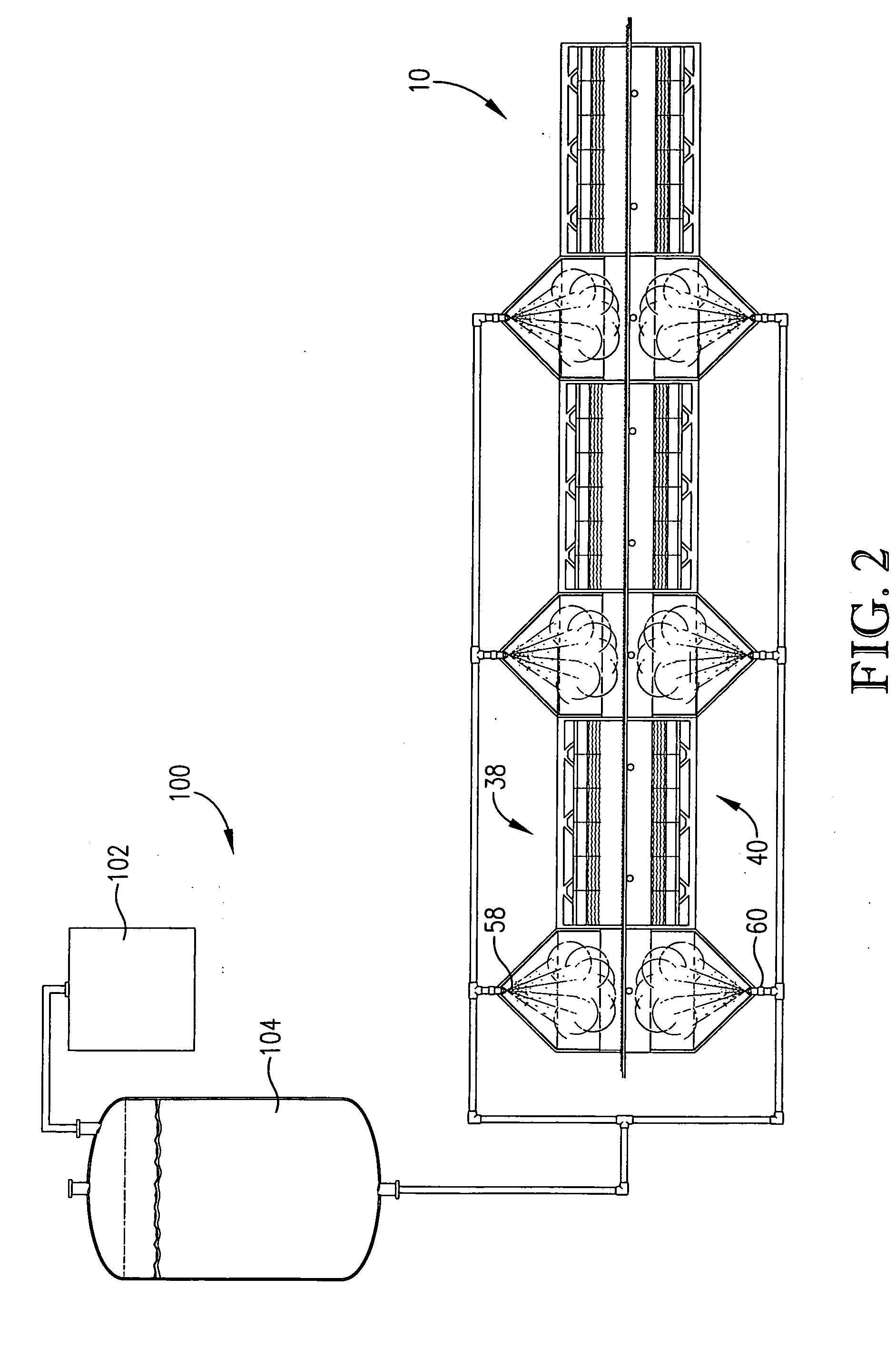System for microorganism control
a microorganism and system technology, applied in the field of nuts, can solve the problems of no truly efficient, no real efficient and cost-effective way of almond treatment, and significant amount of harmful microorganisms in nuts such as almonds, so as to eliminate radiation exposure concerns, reduce the level of microorganisms, and reduce the effect of microorganisms
- Summary
- Abstract
- Description
- Claims
- Application Information
AI Technical Summary
Benefits of technology
Problems solved by technology
Method used
Image
Examples
example 1
[0029] In this example, almond samples were inoculated with Salmonella enteritidis and treated by sequentially heating and water-misting the inoculated almonds. Thereafter, the degree of microorganism kill was recorded and compared with control samples.
[0030] In particular, Salmonella enteritidis PT30 obtained from the National Food Laboratory was used in this study. The microorganism was maintained in phenol red agar media supplemented with sucrose (10.0 g / L) and sodium thiosulfate (0.3 g / L). Ferric ammonium citrate (0.5 g / L) was used as the recovery medium in all experiments. Stomaching was done using peptone water and serial dilutions were also done using peptone water.
[0031] Cultures were prepared by inoculation into 35 mL of tryptic soy broth followed by incubation at 35° C. well into the stationary phase (18 hours). The 18-hour culture was then used to inoculate seven TSA plates (100×15 mm) to produce a bacterial lawn after incubation for 24 hours at 35° C. Approximately sev...
example 2
[0045] In this example, the effectiveness of treating almonds inoculated with Salmonella Enteritidis phage type 30 (SEPT30) with the acid portion of EO water, infrared radiation exposure, and a combination thereof was studied.
Preparation of Inoculum
[0046] Fresh cultures of SEPT30 were revived from a frozen stock culture maintained at −80° C. by sub-culturing onto tryptic soy agar (TSA) from Becton BD Diagnostic Systems, Sparks, Md. and incubating for 24 hours at 35° C. A single isolated colony was transferred into tryptic soy broth (TSB) and incubated for 24±2 hours at 35±2° C. A subsequent loop transfer and overnight incubation at 35±2° C. was performed. The overnight culture was used to inoculate 150 mm×15 mm TSA plates to produce a bacterial lawn after incubation for 24±2 hours at 35±2° C. Three plates were prepared per 400 g batch of almonds. Following incubation, approximately 8-9 ml of 0.1% peptone was added to each large plate. The bacterial lawn was loosened with a steril...
PUM
 Login to View More
Login to View More Abstract
Description
Claims
Application Information
 Login to View More
Login to View More - R&D
- Intellectual Property
- Life Sciences
- Materials
- Tech Scout
- Unparalleled Data Quality
- Higher Quality Content
- 60% Fewer Hallucinations
Browse by: Latest US Patents, China's latest patents, Technical Efficacy Thesaurus, Application Domain, Technology Topic, Popular Technical Reports.
© 2025 PatSnap. All rights reserved.Legal|Privacy policy|Modern Slavery Act Transparency Statement|Sitemap|About US| Contact US: help@patsnap.com



